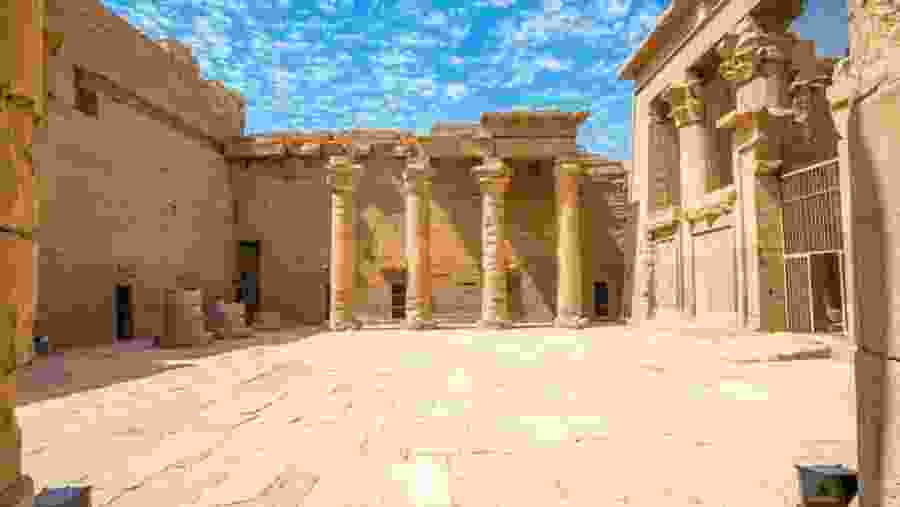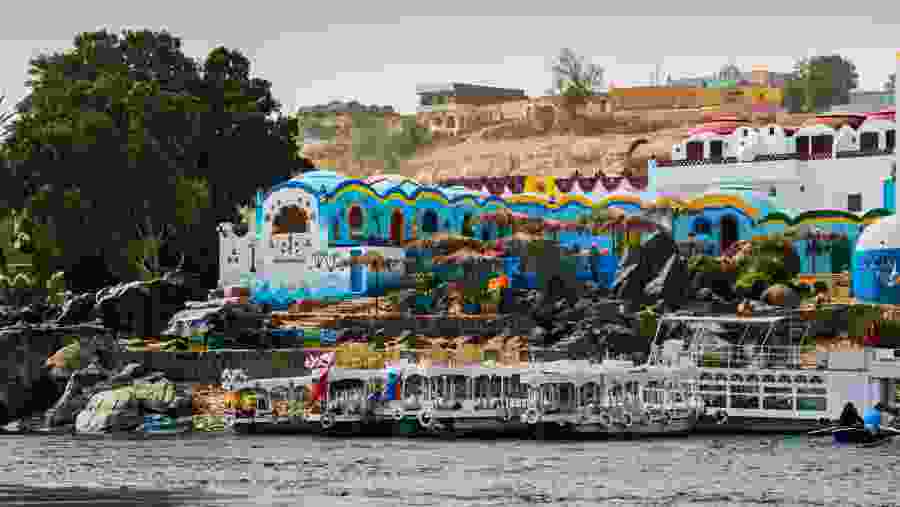Discover the Historical Landmarks of Aswan and Luxor in 5 Days
Highlights
Aswan, Luxor
archaeological, historical, museums
Private Tour
5 Days
Easy
English
Description
Explore the ancient highlights of Aswan and Luxor and visit the Unfinished Obelisk, the High Dam, Abu Simbel Temples, and the Valley of the Kings, among others. Marvel at the beauty of the widespread statues and structures at Karnak and Luxor's two most significant temples. Explore the ancient recovered remains of Nubia at the International Museum of Nubia, the receiver of the Aga Khan Award for Architecture.
Itinerary
-
Day 1- Arrive in Aswan
- Meet your tour guide after arriving from the Aswan International Airport, where a representative will assist you with arrival procedures and take you to the hotel. At the hotel, the tour manager will assist with a smooth check-in and review your holiday itinerary with you to establish and confirm pick-up times for each tour.
Overnight in Aswan.
(Welcome drinks)
-
Day 2- Explore the Highlights of Aswan
- Have breakfast and visit the world-famous High Dam, an engineering miracle constructed between 1960 and 1970. It aimed to increase economic production by further regulating the annual river flooding and providing water storage for agriculture, and later, to generate hydroelectricity. The dam had a significant impact on the economy and culture of Egypt.
- Move to the Unfinished Obelisk. This obelisk is believed to belong to Queen Hatshepsut, one of the rulers of the 18th dynasty and the royal wife of king Tuthmosis II. The Unfinished Obelisk is the largest known ancient obelisk, located in the northern region of the stone quarries of ancient Egypt in Aswan, Egypt. It is unknown which pharaoh created this structure. It is nearly one-third larger than any ancient Egyptian obelisk ever erected. If finished, it would have measured around 42 m and weighed nearly 1,200 tons.
- You can book an evening trip to the fabulous sound and light show at the Philae Temple. (Optional)
Overnight In Aswan.
(Meal: lunch) -
Day 3- See the Edfu and Kom Ombo Temples
- Have breakfast and visit Edfu, the majestic temple dedicated to Horus. It is the second largest temple after Karnak, known in Greco-Roman times as Apollonopolis Magna. The temple was dedicated to the falcon God Horus and was built during the Ptolemaic period which was oriented east-west instead of the current north-south configuration. The oldest part of the temple is the section from the Festival Hall to the Sanctuary; this was begun by Ptolemy III in 237 BC and completed by his son, Ptolemy IV Philopator. The Hypostyle Hall was added by Ptolemy VII (145-116 BC), and the pylon was erected by Ptolemy IX (88-81 BC). The final touches to the temple were added under Ptolemy XII in 57 BC. The falcon-headed Horus was originally the sky god, whose eyes were the sun and moon.
- See the Temple of Kom Ombo standing on high grounds overlooking the Nile. The Temple of Sobek and Haroeris in Kom Ombo (also known simply as Kom Ombo Temple) dates back to 180 BC during the Ptolemaic era, with additions made in Roman times. It was also built under Ptolemy VI. Since this bend in the Nile was a favoured spot for crocodiles to bask in the sun and threaten locals, it is natural that the temple would be dedicated to Sobek, the crocodile god. However, it also honours Haroeris, a form of the falcon-headed god- Horus. The hypostyle halls were added under Ptolemy XIII (51-47 BC), and the Roman emperor Trajan (53-117 AD) added the forecourt and outer enclosure walls.
- Return to the hotel.
Overnight in Aswan.
(Meals: breakfast, lunch) -
Day 4- Visit the Highlights of Luxor
- Have breakfast at your hotel in Aswan and go to the train station for boarding the train to Luxor.
- Visit the Valley of the Kings. It was created and used from approximately 1539 BC to 1075 BC. It contains some 60 tombs, starting with Thutmose I and ending with Ramses X or XI. The site's official name was- The Great and Majestic Necropolis of the Millions of Years of the Pharaoh, Life, Strength, Health in The West of Thebes, or the Great Field. The most famous tomb is KV62, the Tomb of King Tutankhamun. Howard Carter made the discovery of King Tut’s tomb in 1922. Tutankhamun’s tomb was the first royal tomb to be discovered that was still largely intact.
- Continue the tour to visit the Hatshepsut temple at El Deir El Bahary. This impressive temple was dedicated to Queen Hatshepsut, the only female pharaoh. It rises out of the desert in a series of terraces and merges with the sheer limestone cliffs surrounding it.
- Proceed to the two colossal statues of Amenhotep III. Colossi of Memnon are the two massive stone statues of Pharaoh Amenhotep III. For 3,400 years, they have sat in the Theban necropolis across the River Nile from the city of Luxor. The original function of the Colossi was to stand guard at the entrance to Amenhotep’s memorial or mortuary temple. Have lunch at a local restaurant.
- Head to explore the Karnak Temple, the largest place of worship ever built. In ancient Egypt, the power of the god Amun of Thebes gradually increased during the early New Kingdom, and after the short persecution led by Akhenaten, it rose to its apex. In the reign of Ramesses III, more than two-thirds of the property owned by the temples belonged to Amun, evidenced by the stupendous buildings at Karnak. Although badly ruined, no site in Egypt is more impressive than Karnak. It is the largest temple complex ever built by man and represents the combined achievement of many generations of ancient builders. The Temple of Karnak is three main temples, smaller enclosed temples, and several outer temples located about three kilometres north of Luxor, Egypt, situated on 100 ha (247 acres) of land. Karnak is the site's modern name. Its ancient name was Ipet-isut, meaning "The Most Select (or Sacred) of Places."
- Move to Luxor Temple. Amunhotep III built it in the 18th Dynasty in the New Kingdom, and Ramesses II completed it during the 19th Dynasty. King Ramses II was the most famous king in the 19th Dynasty. He ruled Egypt for about 67 years. It was dedicated to the great god Amun-Ra, his wife Mut and their son Khonsu, representing the Theban triad. Enjoy visiting the Obelisk of Ramses II in front of the 1st Pylon. It was called "Ipet resyt", the Southern Opet or the Place of the Seclusion of Amun-Re. It was directly connected to the temple of Karnak- the main cult center of Amun-Re or Amun-Min, the sky god or the ithyphallic fertility god. Since its inception, the temple of Luxor has always been a sacred site. After Egypt's pagan period, a Christian church and monastery were located here, and after that, a mosque (13th-century Mosque of Abu el-Haggag) was built that continues to be used today.
- Transfer to your hotel in Aswan, about 03 hours and a half far from Luxor.
Overnight in Aswan.
(Meals: breakfast, lunch) -
Day 5- Departure
- Have breakfast at the hotel and transfer to the airport for your onward destination.
(Meal: breakfast)
What's Included
What's Excluded
Know Before You Go
What To Bring
Meeting Point
Cancellation Policy
-
For cancellations upto 2 days before the tour -
Refund of 80% of the tour price.
Price
| Adult | |
|---|---|
| 3 to 3 | /person |
| 2 to 2 | /person |
| 1 to 1 | /person |
| Child | |
| 1 to 4 | /person |
|
This is a private tour |
|





